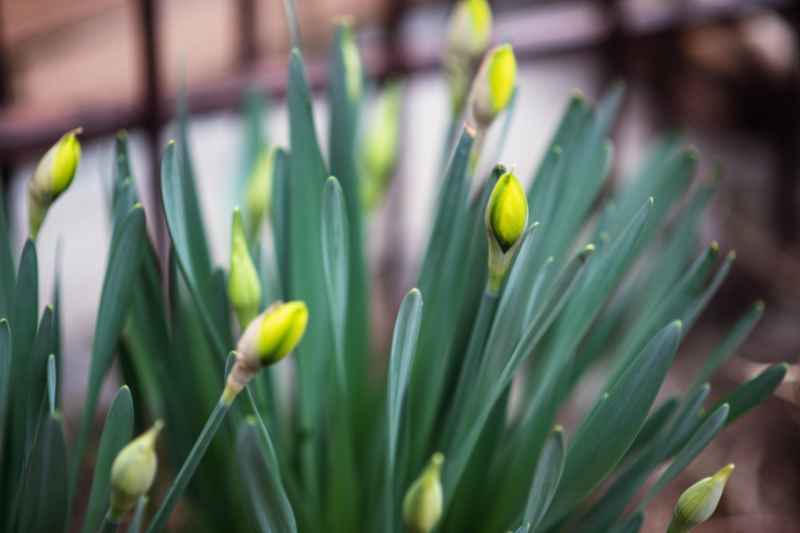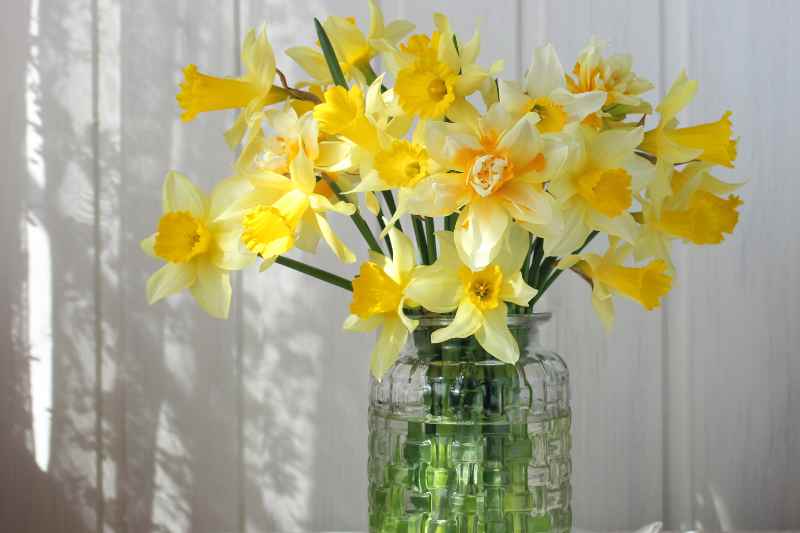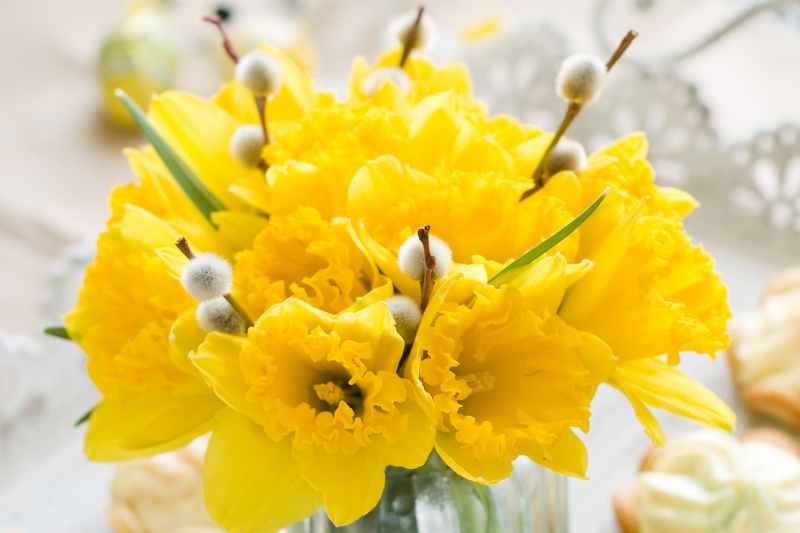So simple, so refreshing, so endearing, daffodils or narcissi (they are the same) symbolise the return of spring! Depending on the variety, flowering occurs from late February for the earliest to mid-May for the latest. They illuminate borders, beds, rockeries, and window boxes with their natural charm, offering a myriad of often single flowers and sometimes double ones. But what a pleasure it is to gather full bunches of daffodils to create fresh, spring bouquets that will fill the home with their often sweet fragrance. Under good conditions, these freshly cut daffodils last up to 15 days in a vase. Follow my tips and bring spring into your home!
1. Choose fragrant daffodils
All varieties of daffodils, from the simplest to the most sophisticated, are well-suited for bouquet making. You can choose from the most prolific and reliable varieties with sturdy stems that hold well in a vase. Consider 'Cassata', a graceful light yellow daffodil, known as orchid-like flowered, which is interesting for bouquets, the Narcissus 'Dick Wilden', a reliable choice with its large bright yellow double flowers, or the Narcissus 'Dutch Master', timeless, the true large-flowered golden yellow daffodil! The Narcissus ‘Flower Record’ is another must-have daffodil variety with its large white flowers and bright yellow crown edged in orange. Treat yourself to bunches of daffodils from the end of winter with the Narcissus 'February Gold' which is one of the first to bloom in the garden, sometimes as early as February and lasting until May or even June with the Narcissus ‘Sherborn’. And don’t miss out on their distinctive fragrance by choosing fragrant daffodils, such as the poet's daffodil ('Actaea', 'Recurvus', narcissus poeticus 'Albus Plenus Odoratus'), intensely fragrant.

2. Select healthy, budded flowers!
Pick your daffodils when the bud is coloured (wait until the flower's colour is fully visible) and just starting to open. Picked this way at the onset of their blooming, they last about ten days in a vase. Choose healthy flowers with intact stems. No need to use pruning shears; just gently cut the stems by hand or with a small knife to detach them from the bulb.
- Remove the lower leaves from each stem so they do not touch the water in the vase
- Quickly place the cut flowers in fresh water to preserve them
- Place your bouquet in a clean vase filled with water
- Avoid placing the vase in direct sunlight, but in a relatively cool spot
- Change the water regularly

3. Let them be solitary!
Daffodil stems contain sap that quickly wilts other flowers in a vase, particularly tulips. They are not good companions… We advise you not to mix them with other cut flowers, or you will have to change the water daily to better preserve your bouquet. The solution: soak the ends of the daffodil stems in hot water for 1 to 2 minutes to cauterise them before placing them in their vase. This way, you can enjoy your mixed flower bouquet for longer!

4. Choose the right vase
When choosing a vase, let your imagination run wild! A multitude of containers is available to showcase their vibrant and refreshing colours. Personally, I like to place daffodils in a clear glass vase, allowing me to enjoy the graphic display of their green stems. This could be, for example, a repurposed jar as a clever and pretty vase, simple yet effective, or a water carafe that creates a simple, natural, and poetic arrangement. Ceramic pots, especially blue Delft porcelain, will highlight the sunny yellow of their flowers. Placed in a zinc bucket or an enamel jug, they will embody a recycled or vintage spirit.

5. Mix them wisely
So, since other flowers do not tolerate their presence, what can you pair them with in a bouquet? Think of branches, such as twisted willows or catkins, those of decorative wood dogwoods, or spring-flowering shrubs like forsythias, lilacs, or Japanese quinces. Decorative foliage like that of eucalyptus or stems of ferns will look stunning with daffodil flowers.
































Comments